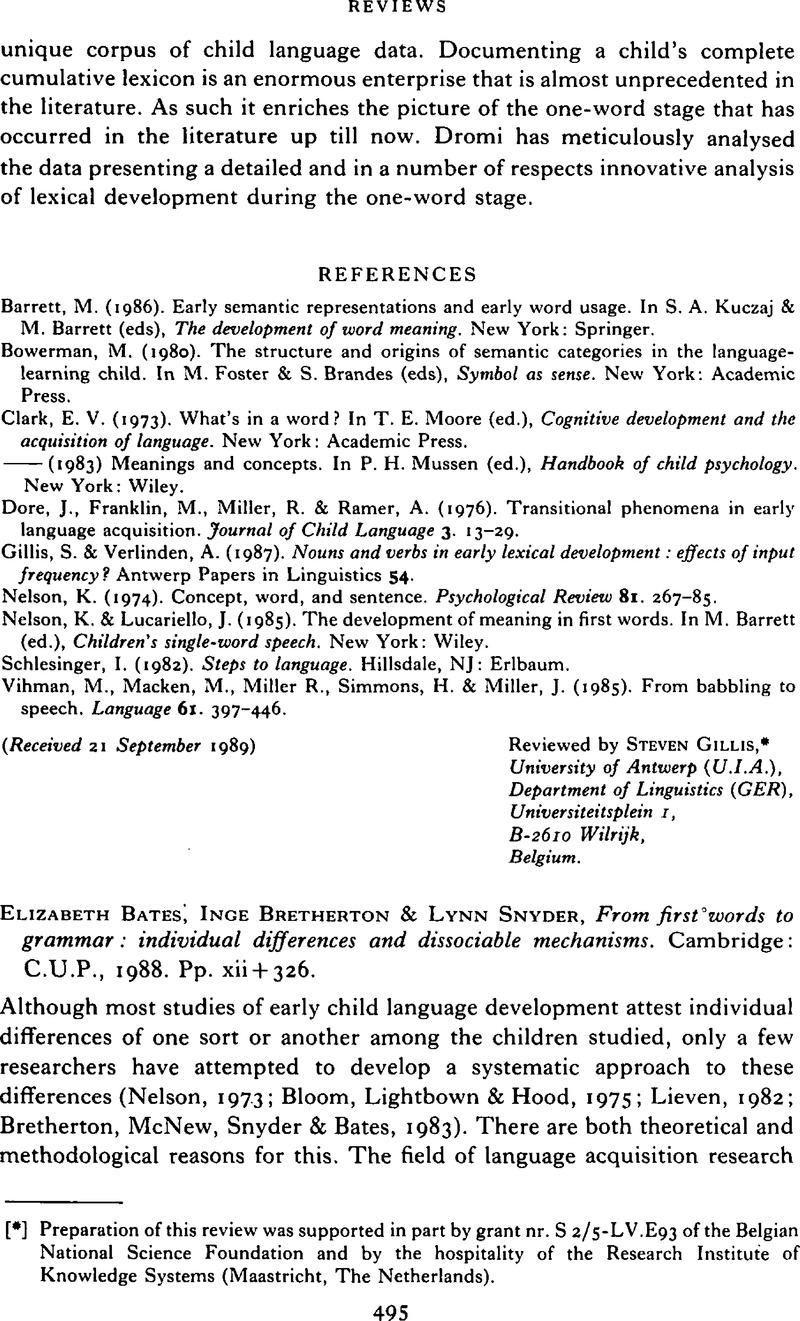Crossref Citations
This article has been cited by the following publications. This list is generated based on data provided by Crossref.
Caselli, Maria Cristina
Bates, Elizabeth
Casadio, Paola
Fenson, Judi
Fenson, Larry
Sanderl, Lisa
and
Weir, Judy
1995.
A cross-linguistic study of early lexical development.
Cognitive Development,
Vol. 10,
Issue. 2,
p.
159.
Pine, Julian M.
Lieven, Elena V. M.
and
Rowland, Caroline
1996.
Observational and checklist measures of vocabulary composition: what do they mean?.
Journal of Child Language,
Vol. 23,
Issue. 3,
p.
573.
Pine, Julian M.
Lieven, Elena V. M.
and
Rowland, Caroline F.
1997.
Stylistic Variation at the "Single-Word" Stage: Relations between Maternal Speech Characteristics and Children's Vocabulary Composition and Usage.
Child Development,
Vol. 68,
Issue. 5,
p.
807.



